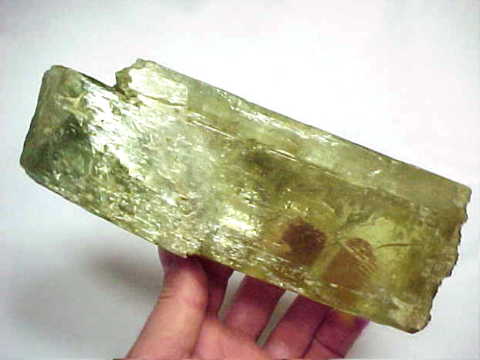
Mix lithium with water and you get a highly energetic reaction:
2 Li (s) + 2 H2O (l) → 2 LiOH (aq) + H2 (g)
Take lithium hydroxide (LiOH) and mix it with tallow (animal fat) and you get lithium stearate (LiC18H35O2), a component of grease (ever greased wheel bearings?).
Lithium hydroxide is also useful in spacecraft, submarines, and scuba rebreathers where it helps scrub carbon dioxide (CO2) from exhaled air.
2LiOH + CO2 → Li2CO3 + H2O

Astronaut checking lithium hydroxide canisters on the space shuttle Endeavour (STS-126)
The product of this reaction is lithium carbonate (Li2CO3), a very useful industrial chemical used in glassmaking for bakeware, in ceramic glazes, as an ingredient in cement to help it set faster, in tile adhesive, and other applications.
Lithium carbonate is also used as a medication. It turns out that that it acts as a mood stabilizer in bipolar disorders. It's not well-understood why it works (but certainly shows how chemistry affects our moods). In 1929, lithium citrate (Li3C6H5O7), also used as a mood stabilizer, was placed into a soda originally called "lithiated lemon-lime soda." Today we know it as 7-Up (no lithium in it anymore!).
A huge use of lithium is for batteries. Most lithium batteries use lithium for the anode (negative end) and manganese dioxide (MnO2) for the cathode (positive end) of the battery. Lithium batteries are used in applications that require relatively low current (but can deliver high current pulses) and a long-life. In other words, a lot of consumer electronics.
I've read that lithium scavenged from old batteries can be used in the production of methamphetamine. This has led to completely ridiculous restrictions (like those for Sudafed) in some localities restricting the amount of batteries you can purchase at one time.

Spodumene has two gem varieties. One is pale, emerald green hiddenite first found in North Carolina by eploration geologist William Earl Hidden. Hidden was actually searching for sources of platinum in the area for Thomas Edison in 1879 (which was a failure). Specimen below is from Pakistan.
The second variety of spodumene of note is kunzite, a pink to pale purple variety. Kunzite has a tendency to fade in bright light leading to its nickname of "evening stone" when used as jewelry. First found in California in 1902, it's named after the famous mineralogist George F. Kunz who worked for both the American Museum of Natural History and the Tiffany Company among other things. Below is some kunzite from Pala, California.

Another mineral containing lithium is a variety of Elbaite tourmaline (named for deposits in Elba, Italy) called "watermelon tourmaline" for its zoned red/green color. Elbaite has the horrendously complex formula Na(Li,Al)3Al6Si6O18(BO3)3(OH)4.

Tourmalines (the name denotes a whole group of minerals) are also found in granite pegmatites and often occur in association with spodumene. The sample above is from the famous Plumbago Mountain deposit in Maine.
Like I said, it's an interesting element.










No comments:
Post a Comment